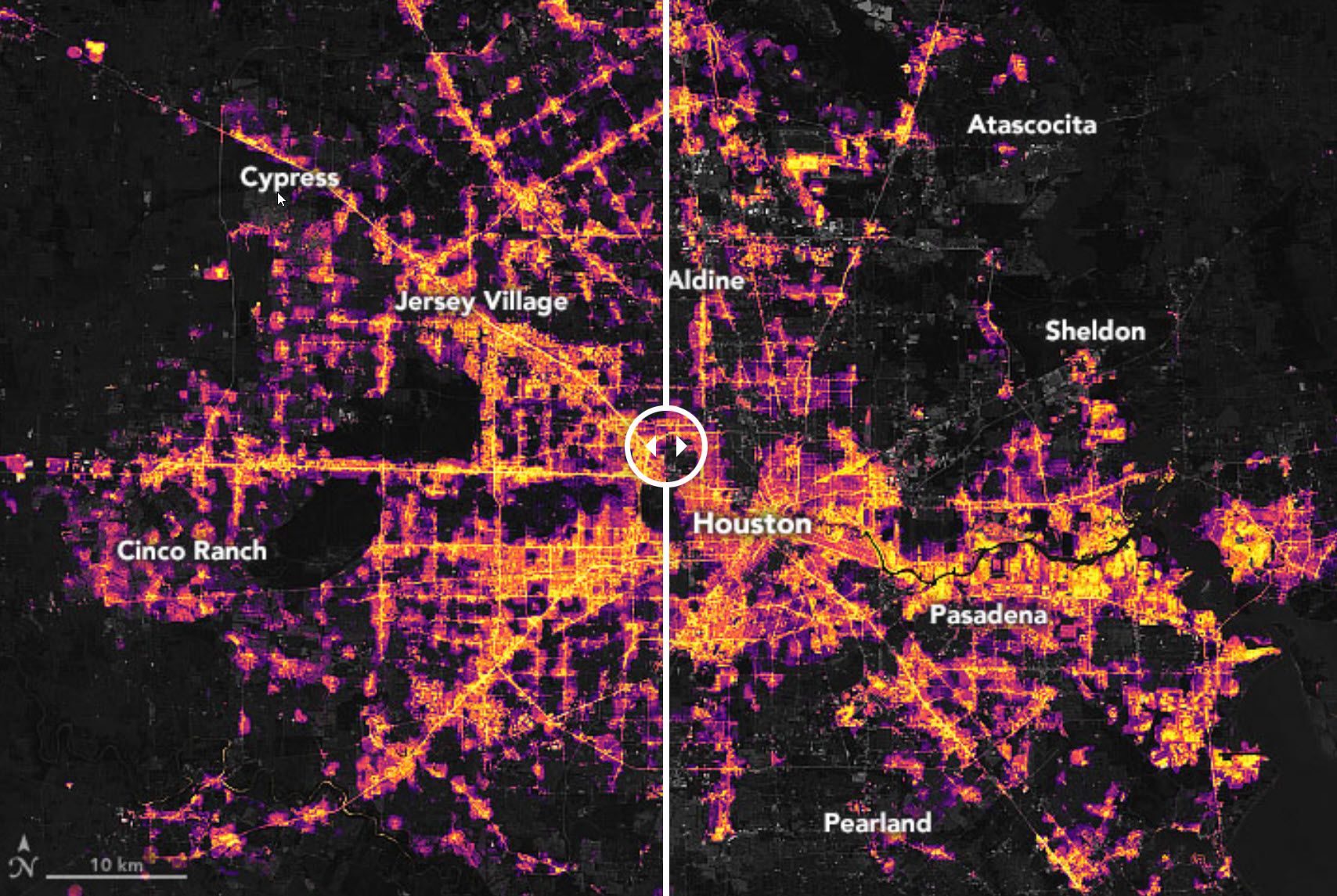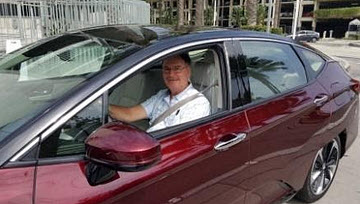
Could Hydrogen-Powered LightningH Trucks Provide Grid Backup in a Zero-CO2 World?
October 3, 2021The LightningH truck will make up a significant portion of those replacements. With its 580 kWh capacity, each LightningH truck could provide around 500 kWh of energy to the grid during a three-day emergency. If all 50 million trucks were available, they could provide up to 25,000 TWh of emergency energy, more than enough to cover the hypothetical 5 TWh needed for the emergency in our example. While this may be an oversimplified scenario, it highlights the potential for hydrogen-powered vehicles to play a crucial role in providing emergency grid backup power in a zero-CO2 world.
My previous Hydrogen Fuel News articles* recommend that Ford should immediately upgrade its new Lightning battery-powered truck to hydrogen power, supporting it with a country-wide “starter network”
of fuel stations. Those stations would produce their own hydrogen from electricity and water. The hydrogen-powered “LightningH” could have a thousand-mile range with its 580 kWh of stored energy. The truck (and others like it) would outperform everything on the road and should quickly dominate the market, with tens of millions in service by 2035. Ford has included a system to deliver the truck’s stored energy to the grid upon request, creating an emergency resource for our Age of Clean Energy.
We can use that to power through short-term energy crises of the sort we’ve encountered recently.
Note: This article doesn’t deal with the routine power reductions associated with green energy’s intermittent sources. A 100% green (zero CO2) energy system that depends largely on solar and wind will regularly have enormous shortages if powerful backup systems are not developed in parallel. The shortages will be due to nightly zero solar output, wind speed variability, and the winter months when solar output in northern regions is very low. It’s a difficult problem that’s unique to solar and wind — we’ll discuss possible solutions in future articles.

Image Credit: https://earthobservatory.nasa.gov/images/147941/extreme-winter-weather-causes-us-blackouts
What we do cover in this article: Short-term grid emergencies. These are the events that kill a region’s electricity supply for a few days: A “perfect storm”, a heat dome or a polar vortex issue — crises that need quick and powerful responses. This year’s surprise in Texas was a good example.
We’d normally spin up lots of turbine-generators powered by natural gas to help deal with such a problem, but that’s not going to be the answer in a zero-CO2 world. Can the LightningH and other H-Trucks, resting quietly at home most of the time (as do most vehicles), provide a solution?
Grid Backup – Let’s do a little math to find out – we’ll start with data from the U.S. Energy Information Administration
The U.S. end-use sector (residential, transportation and commercial/industrial) consumed about 70 quadrillion BTUs (20,000 TWh; 20 trillion kWh) of energy last year. That’s not just the electricity we used – it’s all the energy used to heat and cool homes, fuel our transportation, and operate our buildings and factories. Our long-term goal is to power it all with zero-CO2 electricity, but most of the energy right now comes from burning coal, oil and natural gas. To help replace that CO2-generating colossus we’ll need to install an average of 400 million 600-watt solar panels and 30,000 7.5-MW wind turbines per year for the next 30 years – a tall order (see poweringaplanet.com).
Let’s say that we’re halfway there by 2035, with 10,000 TWh of green energy being produced annually. Accidents and weather will occasionally interfere with its delivery. Could the energy stored in millions of hydrogen-powered trucks handle such interruptions?
A 2035 three-day all US green energy supply (about a percent of the 2035 total, above) would be 100 TWh. Let’s say that a region the size of Texas, California or the northeastern U.S. (an area with roughly 10% of the U.S. population and energy use) suddenly needs help during a power-disrupting event. Let’s also assume that we have the long-distance high-voltage DC lines installed by then to move power where it’s needed. (More on that, soon.) Non-essential services, perhaps half the region’s demand, would be quickly put on standby in a well-managed emergency. So — the energy needed to cover the crisis would be about ½ x 10% of that 100 TWh supply: 5 TWh. We’d like to find a reliable, cost-effective way to “pick up” that load. How much of that emergency could be handled by our H-trucks?
TWh. Let’s say that a region the size of Texas, California or the northeastern U.S. (an area with roughly 10% of the U.S. population and energy use) suddenly needs help during a power-disrupting event. Let’s also assume that we have the long-distance high-voltage DC lines installed by then to move power where it’s needed. (More on that, soon.) Non-essential services, perhaps half the region’s demand, would be quickly put on standby in a well-managed emergency. So — the energy needed to cover the crisis would be about ½ x 10% of that 100 TWh supply: 5 TWh. We’d like to find a reliable, cost-effective way to “pick up” that load. How much of that emergency could be handled by our H-trucks?
All of it. 😊
There are currently about 50 million light-duty trucks licensed in the U.S. Let’s assume that they will be replaced by hydrogen-powered machines by 2035, and that financial incentives** will nudge half of those owners toward supporting the grid during an occasional crisis.
The bottom line: 25 million LightningH trucks, each delivering 300 kWh (leaving plenty of reserve in each), could provide (drumroll, please): 7.5 TWh to the grid. That handles our 5 TWh three-day crisis.
Problem solved, and this emergency system’s “construction cost” will be zero, happily covered by folks who’ll buy a LightningH regardless!
Coming up: How can we finance the solar- and wind-power installations we’ll need to get to zero CO2 by 2050? I think that folks can be nudged to help with this, too — stay tuned. 😉
Notes:
*See A Ford F150 Lightning could travel a thousand miles on hydrogen, Creating the hydrogen gas station network for a highway-cruising Ford F150 LightningH, and Cool, refreshing hydrogen-powered RVs!
**Power company incentives offered to encourage H-truck owners to participate in the emergency backup program could include an annual retainer plus 10 cents per kWh they deliver to the grid during a crisis. The amount of energy extracted would be limited, leaving plenty to get each truck to a free fill-up (another incentive) at a fuel station later. (A credit could instead be offered if the truck’s hydrogen fuel is produced at home from water and electricity — this should be common by 2035.) These costs would be painless – the power companies won’t have to build and maintain expensive emergency backup systems.
We’ll take care of that for them. 😊

The author, Dr. H. Robert Meyer, seen here driving a hydrogen-powered demo at a SEPA energy conference, is an environmental scientist with decades of experience. After serving as a Navy Officer he began his career at the Oak Ridge National Laboratory then moved on to run large projects around the country. His background in physics, environmental protection and alternative energy helps unravel the complexities of converting a planet to all-electric. His website at https://poweringaplanet.com is focused on the tough-to-grasp size of the CO2 reduction problem — the effort required to reverse climate change is not yet widely understood. We need to drastically ramp up the installation rates of green energy and its backups to get to zero emissions before time runs out.



 With over 15 years of reporting hydrogen news, we are your premier source for the latest updates and insights in hydrogen and renewable energy.
With over 15 years of reporting hydrogen news, we are your premier source for the latest updates and insights in hydrogen and renewable energy.